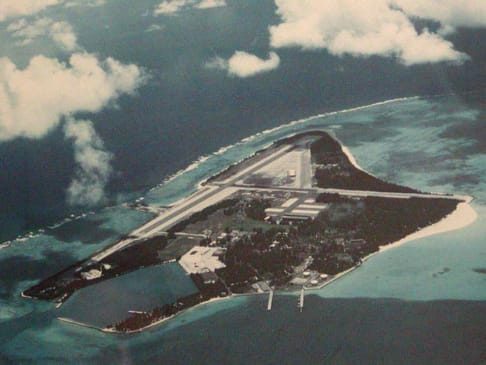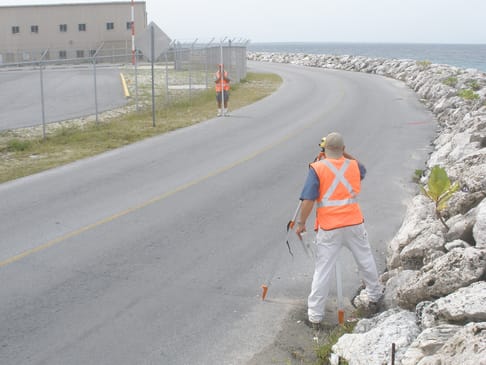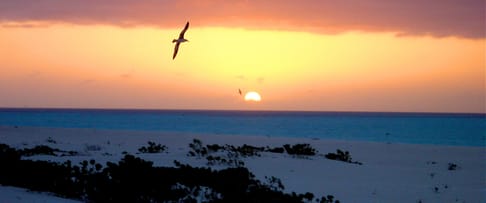The Illusion of Permanence

Earth processes are inexorable. Erosion, landslides, littoral movement, stream channel meandering, wetland formation, and habitat changes are all unavoidable. This is not new information, nor is just knowing it can’t be avoided particularly useful from an engineering perspective. These types of long-duration changes seem to conflict with a natural human trait of assigning permanence to conditions as they are first encountered. The way that a site looks on the day you take possession, either for development or habitat management, is somehow logged in our minds as the “correct” of “natural” site condition, rather than just the temporary status of an evolving landscape.

The most interesting example in my career is a habitat issue, not a terrain change, that involved pushing back against natural vegetation changes at Midway Atoll National Wildlife Refuge. My customer managed the remote island to maximize Laysan Albatross habitat. You can guess from the name, the birds used to be most closely associated with Laysan Atoll, not Midway. But as soon as the Navy built and maintained a big wide golf course at the Naval Air Station in support of the Korean War efforts, they created perfect nesting habitat for the graceful and endangered seabird.
Adult gooneybirds have a 7-foot wingspan and are basically unable to fly through or land between brush and trees. Nesting area, critical for the species, had to be almost dead flat and free of obstacles. Like a golf course or a parade ground or the lawn in front of the base commander’s office. You get the idea. So for 35 or 40 years the Navy put energy into maintaining the open areas on the atoll, pushing back the ironwood trees and invasive shrubs from the middle of the island, and the Laysan Albatross thrived as a corollary benefit.
When the Navy closed the base at Midway, they took with them their landscape maintenance crews along with their submarines and radar surveillance aircraft. Without the external energy infusion directed toward removing vegetation, the meadow-like lawns were able to resume a natural transformation from meadow to forest, to the detriment of Laysan albatross nesting habitat.
The Fish and Wildlife Service knew well enough that it would happen, but the level of effort was more than they were prepared to invest. When we managed the island we mowed, pulled brush, and cut trees constantly, devoting whatever resources we could make available in between solving serious infrastructure problems. FWS continues to do good work at Midway, though there is something ironic about how a Federal habitat agency invests such huge resources, essentially without end, preventing a natural landscape process in order to preserve habitat that was created, inadvertently, by a Korean War-era base commander enthusiastic about golf.

We are on the defense side of two dispute resolution efforts that have a similar component. In both cases the landowner cites some prior condition of their land as the way that it “should” be, and claims that actions taken or not taken by my client caused their land to deviate from the acceptable initial condition. Both landowners, coincidentally, have chosen the time with the most advantageous site condition as the “correct” time, and are not particularly interested in hearing about how their sites looked before all the work was done to bring them into that erroneously “natural” initial condition.

Surveying the revetment elevation at Majuro International Airport
I would imagine that you can see the extension of this “permanence thinking” to the much more significant issue of sea level rise. Sea levels have fluctuated by hundreds of feet in the geologic past, shaping coastal terrains with terraces and submerged valleys. The geologic record indicates that sea level rise is inevitable, but slower seems to be better for cities established near the water. Artificial influence on a dynamic system is much more difficult to evaluate than if the sea were completely static, a fact not at all lost on groups who benefit from denying the collected evidence and delaying the start of necessary mitigating actions. To consider the sea level at some time, say 1929, as the “correct” sea level is just as pointless as assuming that the vegetation or stream channel location on a site has somehow always been the same.
It’s much more complicated to consider transient conditions on sites in an engineering design. We drill borings to separate recent grading and fills from natural soil deposits and rock formation, and then handle the two types of materials separately. We simplify groundwater fluctuations by assigning a static, conservatively high, level. I’ve only worked on one project where we timed tasks to coincide with low tides. Sea level rise was also assigned a static level in our revetment projects in the Marshall Islands. Erosion, habitat growth and transformation, and similar longer-period fluctuations are not commonly considered. I am curious how long-lifespan infrastructure like roads and ports might benefit from explicitly considering terrain changes over the service life.
Have a great weekend, everyone.


Doug founded Atlas Geotechnical in 2004, and focuses on working for Contractors and Operators, tackling the most challenging problems.